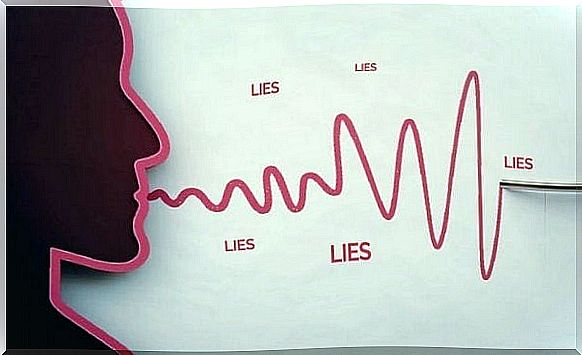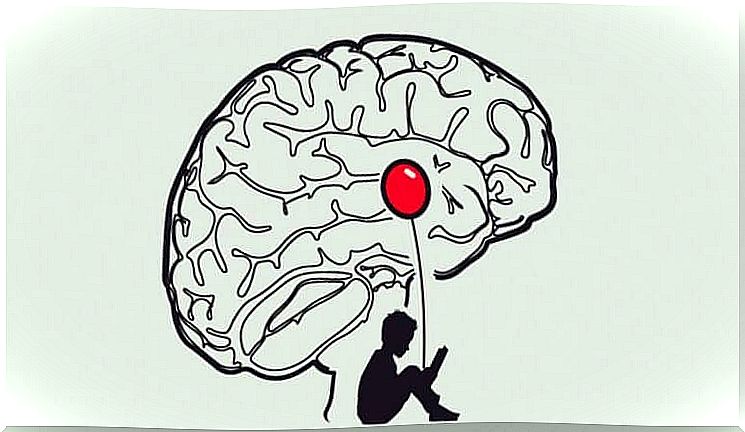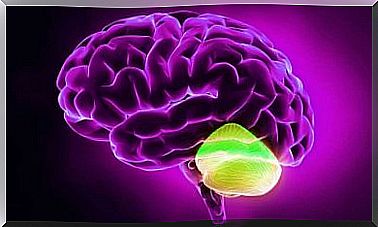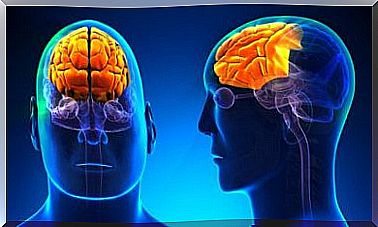How Does A Liar’s Brain Work?

When someone lies compulsively, the person lacks an emotional response to their own falsehoods. Thus, given a total absence of feelings in relation to the practice of lying, the act becomes easier and a resource used habitually. So neuropsychologists have come to the conclusion that a liar’s brain works differently: they are minds trained for this behavior.
If there’s one thing that characterizes every human brain, it’s brain plasticity. This is already determined. Therefore, it is not strange to think that lying can be something trained and learned like any other skill, and that to reach and maintain a good level of excellence, it is enough to practice the skill daily. There are those who have a passion for mathematics, drawing or literature, subjects that also have the ability to shape the brain in particular ways, based on our lifestyle and our daily practices.
The field of psychology and sociology has always been very interested in the world of lies and deception. For decades, however, and given the great advances that have been made in diagnostic techniques, it is neuroscience that is providing the most valuable information today. They are, however, unsettling. Why? If we say right now that the dishonest personality is the result of continuous training and habituation, it is possible that many people will be very surprised and suspicious.
Those who start by telling small lies and make this behavior a habit induce the brain to a progressive state of desensitization. Desensitization is making something “normal” by custom, by many repetitions. Little by little, the big lies hurt less, and become a new way of life…

A liar’s brain and the amygdala
Most of us are surprised by certain behaviors that happen in society that, for many others, are normal in everyday life. Today, for example, we see many politicians fiercely defending their lies, defending their honesty, and normalizing acts that are obviously highly reprehensible, if not outlawed. Does this happen because of the environment? Is it normal for those who hold public office? Or maybe it’s something biological?
Tali Sharot, a professor of cognitive neuroscience at University College London, tells us that there is indeed a biological component. But there is also a process of training and desensitization to behavior. In this context, the brain structure that is directly related to these dishonest behaviors is, without a doubt, the amygdala. The liar’s brain would actually go through a sophisticated training process whose result is to be able to completely eliminate all guilt-related emotion or feeling.
The scientific journal Nature Neuroscience published a very complete article on the subject in 2017, in which there are details of this mechanism. To better understand, we can give an example. Let’s imagine that a young person reaches a position of power in the company he works for. To impart leadership and confidence to his employees, he resorts to little lies. These dissonances between what he says and reality, these little reprehensible acts, result in a reaction provoked by the amygdala of the brain. This small structure of the limbic system is related to our memory and emotional reactions to events; it will limit the maximum degree to which we are willing to lie and feel good.

Let’s see what happens next. This young man ends up converting this lying behavior into one of his everyday tools, making constant use of it. Your work at this company ends up based permanently and deliberately on cheating. When this mechanism is habitual, the amygdala stops reacting, creates a tolerance and no longer emits any kind of emotional reaction. The feeling of guilt disappears, there is no remorse or any kind of worry.
A liar’s brain then adapts to dishonesty.
The lie makes the brain work in a different way
A lieutenant needs two things: memory and emotional coldness. This is what one of the most complete books ever written about a liar’s brain shows: “The Purest Truth About Dishonesty” by psychology professor Dan Ariely. In the same book he also invites us to discover other neurological processes that are equally interesting and surprising.
An experiment carried out by Professor Ariely himself revealed that the brain structure of pathological liars has 14% less gray matter. However, they had between 22 and 26% more white matter in the prefrontal cortex. What does that mean? Basically , a liar’s brain makes many more connections between his memories and ideas. This greater connectivity allows them to have consistency in their lies, and faster access to those associations.

All these data give us a clue about how dishonesty affects our bodies, how these cognitive processes gradually acquire greater prevalence as we act in a certain way, and our brain also fails to add an emotional component to these behaviors.
Thus, Professor Airely still highlights something truly terrifying in these practices. The fact that the amygdala fails to react to certain facts also reveals that we are losing some of the characteristics that make us human. Those who can no longer see the consequences of their actions on others lose their nobility, the natural goodness that would supposedly define us all.
A liar’s brain is formed from a foundation of rather obscure motivations. We could say that behind this person who decides to make lying their way of life there are a series of very concrete goals: desire for power, status, domination, personal interests… It is the ideology of those who decide at a given moment to prioritize themselves himself, and only himself, before everything and before everything else. And nothing could be more unsettling.
Let’s think about it.









